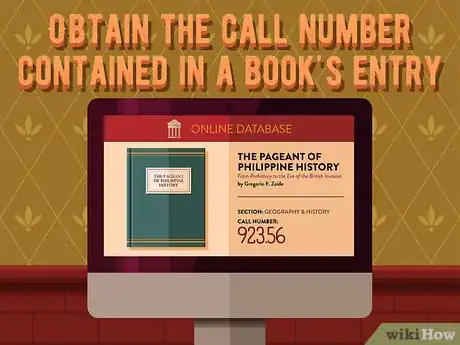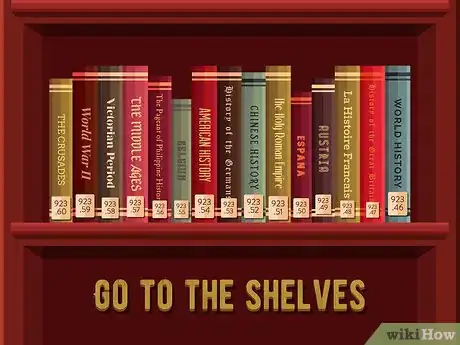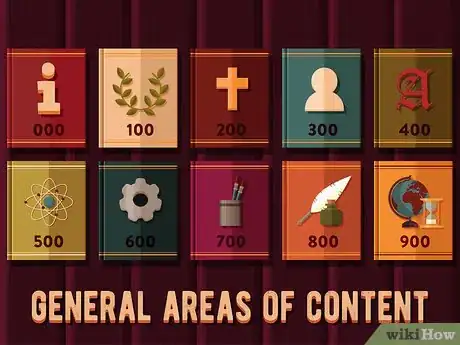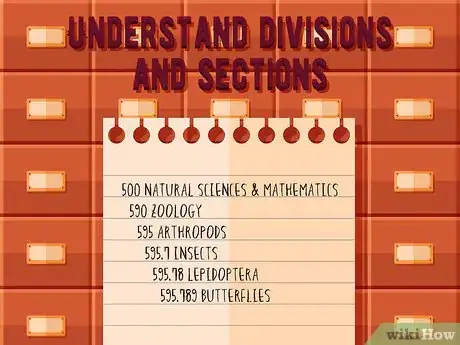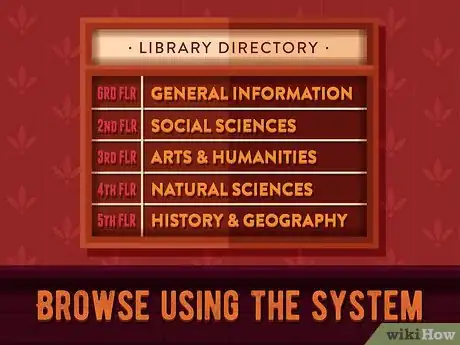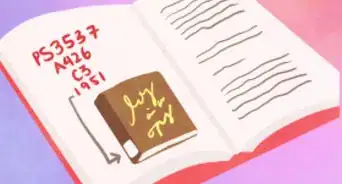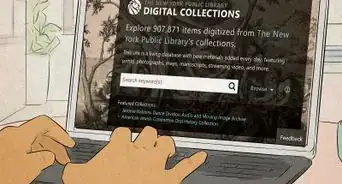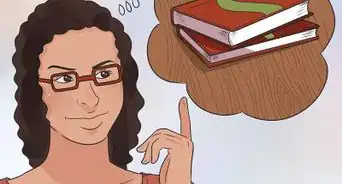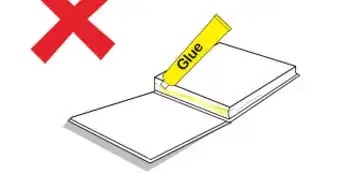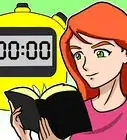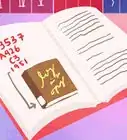This article was co-authored by Kim Gillingham, MA. Kim Gillingham is a retired library and information specialist with over 30 years of experience. She has a Master's in Library Science from Kutztown University in Pennsylvania, and she managed the audiovisual department of the district library center in Montgomery County, Pennsylvania, for 12 years. She continues to do volunteer work for various libraries and lending library projects in her local community.
This article has been viewed 77,787 times.
For centuries, libraries have served an important role providing information for the public. However, for quite a while there was a major flaw in the library system: in a large collection, finding a specific book became difficult and tedious. To combat this issue, Melvil Dewey invented the revolutionary Dewey Decimal System.[1] This system spread far and made the lives of librarians everywhere a little easier. But the system is complex and largely unknown to non-librarians. This article will serve as a guide to various functions of the Dewey Decimal System (DCC) and how to navigate through its seas of knowledge.
Steps
Searching for a Specific Book
-
1Search for your book in the library's card catalog. This system is likely computerized. If you are having trouble, ask a librarian for help or have her simply look it up for you.
- The Dewey Decimal System applies only to nonfiction books.[2] This system organizes the books by topic, ranging from genetics to Victorian England to astrology.
EXPERT TIPKim Gillingham is a retired library and information specialist with over 30 years of experience. She has a Master's in Library Science from Kutztown University in Pennsylvania, and she managed the audiovisual department of the district library center in Montgomery County, Pennsylvania, for 12 years. She continues to do volunteer work for various libraries and lending library projects in her local community.Master's Degree, Library Science, Kutztown University
 Kim Gillingham, MA
Kim Gillingham, MA
Master's Degree, Library Science, Kutztown UniversityCurious why the dewey decimal system exists? Kim Gillingham, retired librarian, tells us: "The Dewey Decimal system is a method for finding nonfiction books according to subject. You can use it to browse through the shelves by finding the number corresponding to your subject and looking for titles with the same number."
-
2Obtain the call number contained in a book's entry. The call number will contain three digits or more.[3] Record both the number and the author's last name before you begin your search.Advertisement
-
3Go to the shelves. Skim the spines of the books you pass to find the ones with the same first digit as your desired book. Then search those books for ones with the same second digit, and so on. Here's an example:
- Let's say you are looking for a book with Dewey Decimal number 319.21.
- Find the aisle that 319 would fall under, ignoring the decimals for now. For example, "300.2–340.99" would be the correct aisle, since 319 falls between 300 and 340.
- Walk down the shelf looking at the spines until you find the books beginning with 319.
- Search within the books beginning 319 to find the one you're looking for. These are arranged by the value of the decimal, so 319.21 falls between 319.20 and 319.22.
-
4Look for a label matching both the call number and the author's last name. There may be multiple books with the same call number, so check the author's name to confirm that you've found the one you selected in the card catalog.
Browsing and Categorizing
-
1Know the ten general areas of content. Melvil Dewey originally created ten general categories that most books could be sorted into. The ten areas are listed below with their corresponding numbers.[4]
- 000 - Generalities, Computer Science, and Information
- 100 - Philosophy and Psychology
- 200 - Religion
- 300 - Social Sciences (anthropology, archeology, sociology)
- 400 - Language
- 500 - Natural Sciences (biology, astronomy, etc.) and Mathematics
- 600 - Technology (applied sciences)
- 700 - The Arts
- 800 - Literature and Rhetoric
- 900 - Geography and History
-
2Understand divisions and sections. Each of the ten areas contain 99 divisions - more specific categories that fall under the larger areas. Additional decimals indicate the even even smaller sections, which are even more specific. Decimals are added if the topic is even more specific.[5] An example of this specification process is below:
- 500 Natural Sciences and Mathematics
- 590 Zoology
- 595 Arthropods
- 595.7 Insects
- 595.78 Lepidoptera
- 595.789 Butterflies
-
3Browse using the system. The Dewey Decimal System is great when you're browsing. If you wanted a book on Ethics, for example, you would go to 170. Once you were there you could scan the shelves for a book on an area of Ethics that interested you. This is infinitely more convenient than alphabetical arrangement, in which you might find a book on turtles next to one about turbulence in politics.
-
4Look online to learn the categories. If your library is large and you would rather not spend a whole day browsing books on the Arts, you could go online for a guide to the various general categories, divisions, and sections. Websites with Dewey Decimal System guides include OCLC, The University of Illinois, IPL.
Community Q&A
-
QuestionI worked in a college library for 23 years & knew the Library of Congress filing system blind-folded. Is there a clue to learning the Dewey system, now that I'll be working in a regular city library?
 DonaganTop AnswererYou'll learn the Dewey system very quickly. It's not hard.
DonaganTop AnswererYou'll learn the Dewey system very quickly. It's not hard. -
QuestionHow do I relate DDC # to LC #?
 DonaganTop AnswererThere is no relationship between the two systems. They're completely different.
DonaganTop AnswererThere is no relationship between the two systems. They're completely different. -
QuestionWhat is the usage of Dewey Decimal system?
 Community AnswerThe Dewey Decimal system is used to categorize nonfiction book topics. For example, numbers 800-899 is the Literature category.
Community AnswerThe Dewey Decimal system is used to categorize nonfiction book topics. For example, numbers 800-899 is the Literature category.
References
- ↑ https://www.library.illinois.edu/infosci/research/guides/dewey/
- ↑ https://www.oclc.org/en/dewey/resources/summaries.html
- ↑ https://www.lib.sfu.ca/find/what-call-number
- ↑ https://www.oclc.org/content/dam/oclc/dewey/resources/summaries/deweysummaries.pdf
- ↑ https://www.oclc.org/en/dewey/resources/summaries.html
- ↑ https://www.loc.gov/catdir/cpso/lcco/
About This Article
If you’re looking for a book that’s catalogued under the Dewey Decimal System, use your library’s catalogue to look up the call number. Find the range of books that includes the first 3 digits of the call number in the stacks, then walk along the shelf until you find books that match those digits. Next, go down the row until you locate a book with a label that also matches the numbers after the decimal point. If the library has multiple books with the same call number, look for a letter on the label that matches the author’s last name. Keep reading for more tips, including how to understand the Dewey Decimal classification system!

